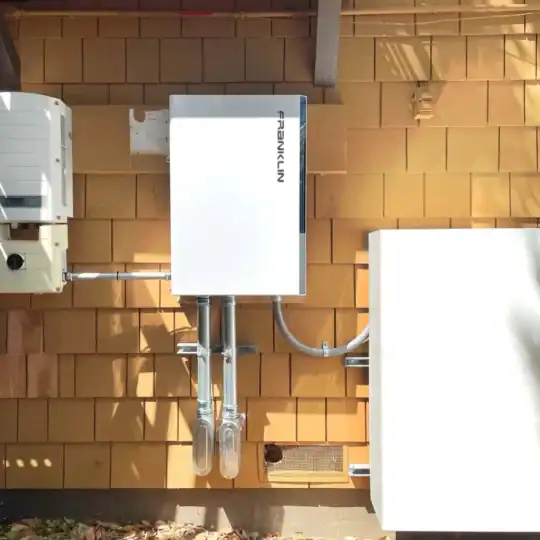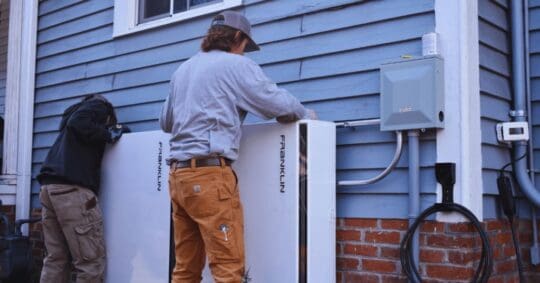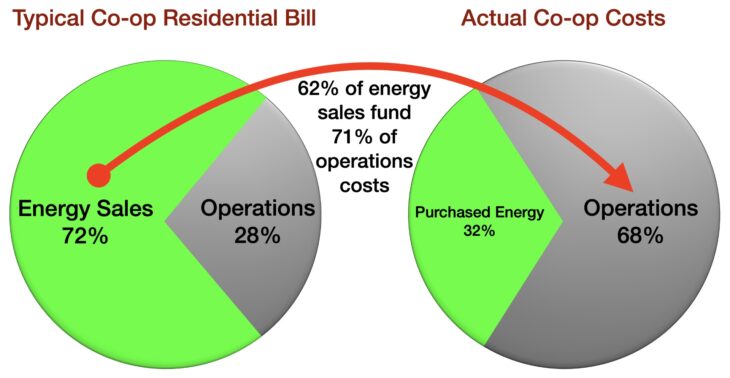Powering the Future
Home battery systems can revolutionize energy independence
As energy costs fluctuate and concerns about grid reliability and climate change increase, many homeowners are turning to home battery systems as a way to gain energy independence, enhance resilience, and reduce electricity bills. Whether paired with rooftop solar panels or installed as standalone units, home batteries are quickly becoming a key part of the modern home’s energy infrastructure.

What Is a Home Battery System?
A home battery system stores electricity for later use. The most common type uses lithium-ion technology, similar to what’s found in electric vehicles. These batteries can be recharged using electricity from the grid, solar panels, or other energy sources. When demand spikes, or during a power outage, the battery supplies electricity to the home similarly to how a backup generator would.
The two main ways these systems are being used in homes is 1) connected to a rooftop-solar system or 2) as a standalone battery system. When a battery system is paired with a rooftop solar system, the battery charges via solar energy production which is then stored for later use. As a standalone system, an at-home battery ends up functioning more like a backup power generator. The battery charges straight from the grid and can store excess power to use less load from the grid during peak energy use periods (like cold weather events), or to use during power outages. Those who own portable diesel or gas generators are familiar with the process required to get it up and running in the case of an outage. These traditional generators are loud and can have a strong odor from the gasoline or diesel. A standalone home battery system serves the same function as a portable generator, but with added convenience, ease of use, and environmental benefits.
Benefits of Home Battery Systems
Backup Power and Resilience: Home battery systems provide peace of mind and convenience during power outages. When the power goes out due to weather events or damage to the lines, a charged battery can keep critical appliances and systems like refrigerators, lights, internet routers, and medical devices, running for hours or even days, depending on the system’s capacity. In some cases, batteries of large enough capacity can power your entire home as normal during a power outage. Plus, some battery systems can be set to click on automatically when they sense the power has gone out, meaning you can enjoy almost completely uninterrupted power even in the event of an outage.
Lower Energy Bills: Home battery systems that are paired with solar can reduce bills by maximizing the use of self-generated energy. Any excess solar energy that is produced by your rooftop panels can be stored and discharged when the sun is down to reduce the amount of energy you need to use from the co-op grid. Over time, this can save a significant amount on your power bills.
Environmental Benefits: A standalone home battery system allows you to use backup power in a way you can feel good about. Say goodbye to diesel and gas guzzling generators while still getting all the conveniences of backup power from cleaner energy sources. When paired with solar panels, batteries enable homes to rely more on local, clean, renewable energy. You can take the environmental footprint of your house into your own hands.
Energy Independence: A home battery can help reduce dependence on the utility grid, and specifically in the case of San Juan County residents, dependence on the mainland grid. This is especially valuable for residents of remote locations like ours, where our connection to mainland power is via one source only – the underwater submarine cables. The more energy independence we can create on the individual member scale as well as the utility the scale, the more equipped we are to deal with large scale mainland outages.

Federal Tax Credits and Incentives
Under the Inflation Reduction Act, the Investment Tax Credit (ITC) allows homeowners to claim a 30% tax credit on the cost of battery storage systems installed from 2023 through December 31st, 2025. This includes both batteries paired with new or existing solar systems and standalone battery systems. Unfortunately, due to the recent updates to the federal budget, energy efficiency project tax credits that were previously meant to be in effect until 2032 are now going away at the end of the year. OPALCO members will have to act fast in order to qualify for the federal tax credits. The good news is, the OPALCO programs and any state incentives will remain intact and available to members.
To qualify, the battery must have a capacity of at least 3 kilowatt-hours (kWh). The credit covers not only the cost of the battery but also installation and other related expenses. This credit is available to both new construction and existing homes.
For example, if a homeowner installs a $10,000 battery system, they can receive a $3,000 tax credit on their federal return, significantly reducing the net cost.
Getting a Battery for Your Home
In addition to federal tax credits, OPALCO members can utilize the Switch It Up program to finance a battery storage project. OPALCO’s Switch it Up program allows members to finance an energy efficiency or improvement project on their monthly OPALCO bill at a 3% interest rate. Many members have already taken advantage of the program to install rooftop solar or switch from energy intensive baseboard heating to a ductless heat pump. Battery projects can revolutionize our energy independence. Visit www.opalco.com/switchitup for more information on how to get started. For questions about a specific battery project, reach out to your electrician or a local contractor to get an idea about which makes and models of batteries can work for your home! Once you know which battery you want to move forward with, contact energysavings@opalco.com to get all your financing questions answered.
Whether you’re looking to go green or just ensure your lights stay on during the next storm, a home battery system is a smart investment. Thanks to federal tax credits, there’s never been a better time to install a battery system—solar-connected or standalone.



